RailState Special Report: Extreme Weather Impact
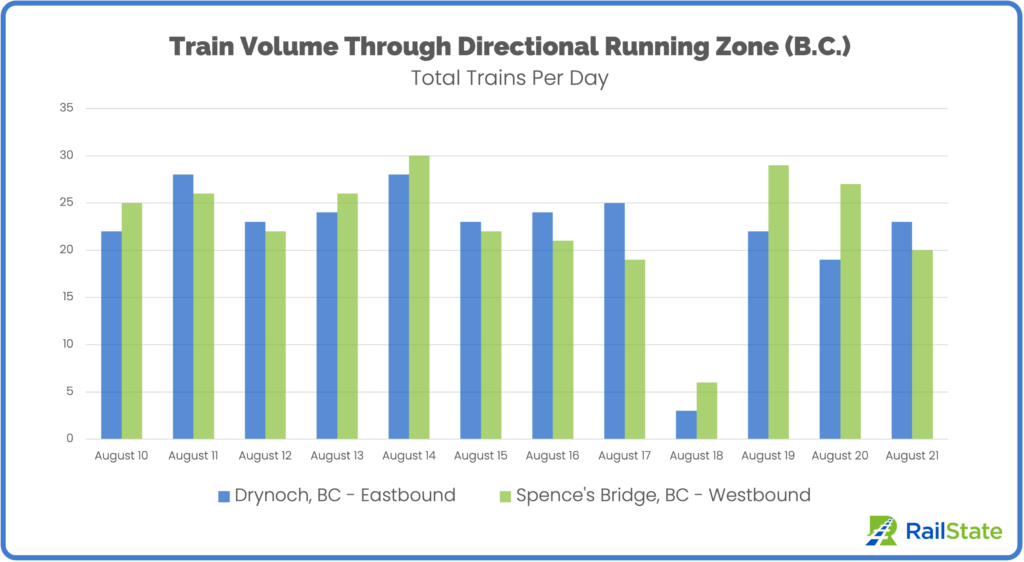
(August 21, 2023) – RailState, the rail industry’s only provider of real-time rail network visibility, independently tracks all freight rail movements across Canada and has recently added coverage in Southern California. As extreme weather events hit areas across North America, RailState is in a unique position to provide detailed data on the impact of these events on rail traffic.
“The weather this year is something most of us would like to forget, but these are the trends that we all have to react to, including the railroads,” said John Schmitter, co-founder and Chief Commercial Officer at RailState. “Some of these recent examples show how resilient rail can be. Tracks can be repaired quickly and service can be back to normal in days, while fixes to roadways may cause congestion for months or longer.”
Southern California Flooding
The first tropical storm to hit southern California in 80 years made landfall over the weekend bringing torrential rainfall and causing widespread flooding throughout the Coachella Valley and Palm Springs area. Water and mud have closed roads throughout the area and taken the main Union Pacific route temporarily offline.
RailState recently expanded its network coverage to this area and can provide additional detail on the impact on rail volumes moving through the region.
The last loaded train to go through the Loma Linda area, just west of the worst-hit areas, was an eastbound manifest train carrying 109 cars of mixed types that passed through the region at 8:39 PM PDT on Sunday, August 20. Rains increased into the evening and early morning, and normal rail flows stopped.
At 2:58 AM PDT on Monday, August 21, a maintenance of way (MOW) train with 33 cars of ballast headed eastbound for track repairs. The unedited image below was taken by a RailState sensor installed near Loma Linda. It shows MOW equipment on the eastbound MOW train.
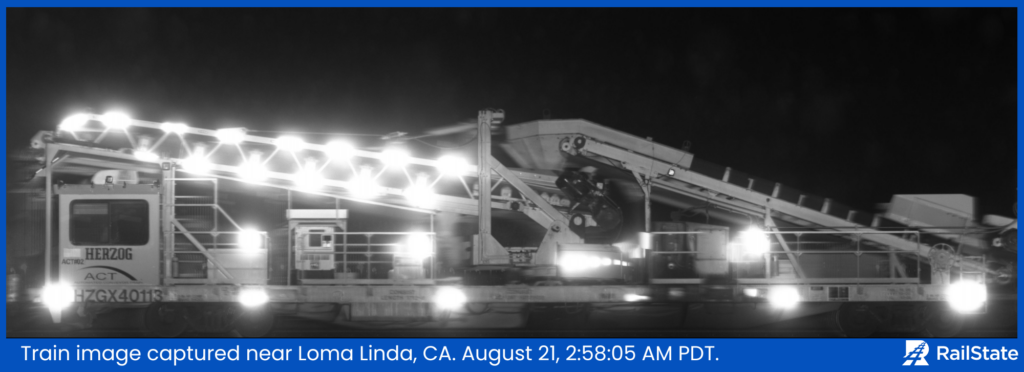
In the 10 days before the flooding, this route saw an average of 31 trains, carrying 3600 carloads, and 4300 containers.
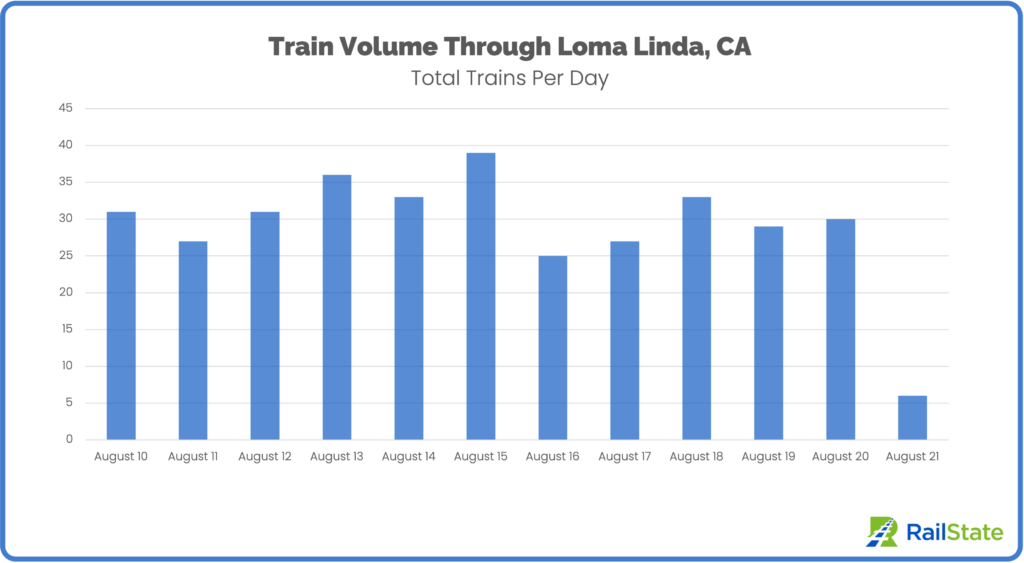
British Columbia Wildfires
Canada is in the midst of one of the worst wildfire seasons in history, with thousands of fires throughout the country going back to late spring. In recent weeks, large wildfires have expanded and threatened cities, including Yellowknife, NT and Kelowna, BC.
The Kookipi Creek Fire, located around Fraser Canyon, grew quickly last week. The fire crossed Highway 1 on Thursday, August 17, forcing the closure of Highway 1 between Hope and Lytton. The highway remains closed today and the Ministry of Transportation will require a structural engineer to evaluate a bridge before allowing travel to return. The bridge in question is a temporary bridge installed after another extreme weather event – the atmospheric river of 2021 that caused widespread washouts through British Columbia, including to the rail network.
Through this region runs the Directional Running Zone, which is the main east-west rail route for traffic into and out of Vancouver. The major railways split responsibility for traffic by direction, westbound trains move on CN and eastbound trains move on CPKC.
On Friday, August 18, rail traffic stopped because of the fire.

The last loaded eastbound train was a manifest train carrying 120 cars that passed Drynoch, BC on Thursday, August 17 at 11:37 PM PDT.
There was no other movement until Friday, August 18, when a MOW train passed at 1:10AM PDT with 28 cars carrying ballast and ballast spreaders. The unedited images below were captured by RailState’s sensor network.
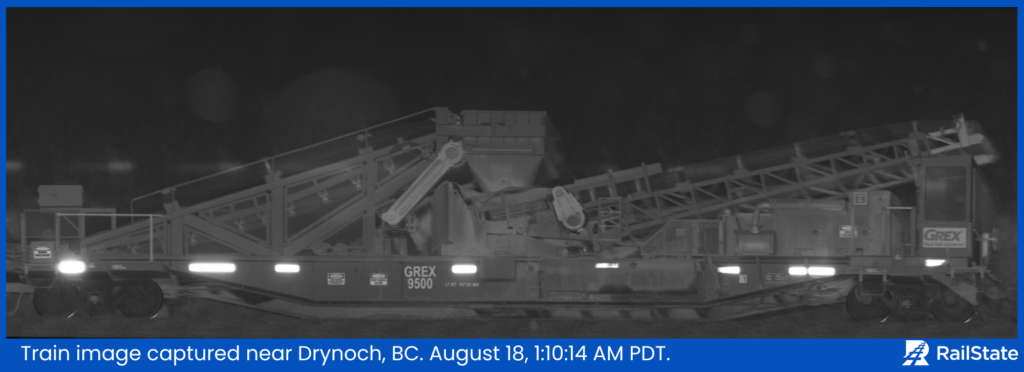
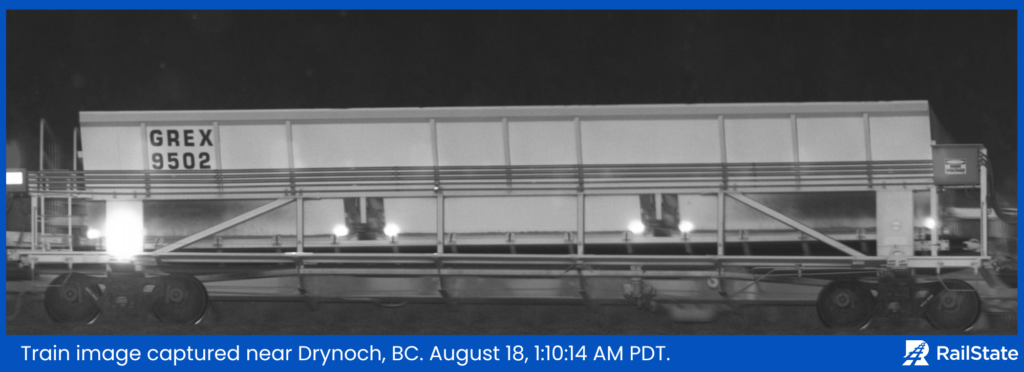
In the westbound direction, through Spence’s Bridge, there were no trains between 8:12 pm Thursday and 4:28 pm Friday.
By Saturday, volumes were back to normal in both directions. Volumes on Monday, August 21 were already close to the average daily totals by 1:45PM PDT
Continuous Updates
RailState will provide additional rail network updates on any disruptions as well as reports on commodity and traffic trends.
Subscribe here to receive these free reports as they are released. For shippers, analysts, and others looking for more information on rail network visibility and navigating rail operations during these and other disruptions, please reach out to contact@railstate.com.
